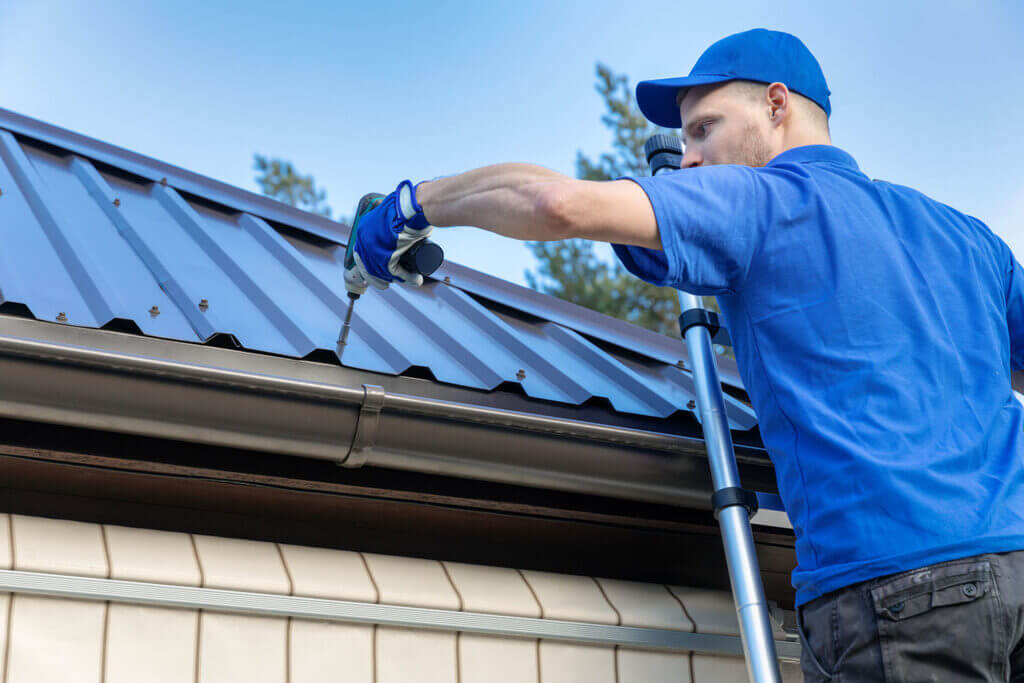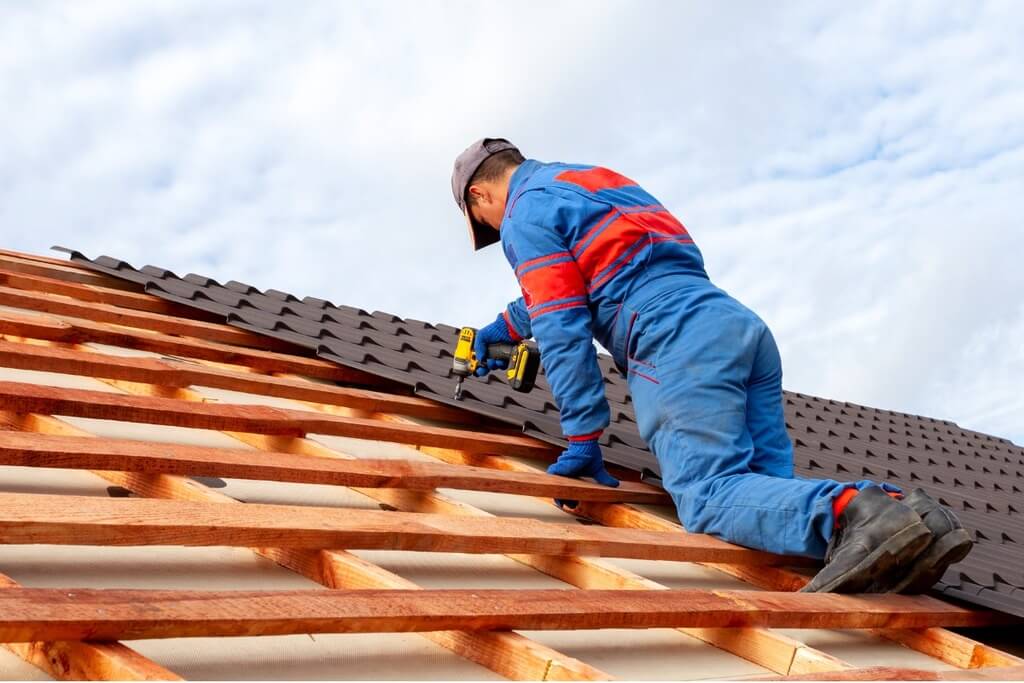Replacing a roof in the winter has many advantages. Winter months are usually quieter for roofers so they can complete the job faster, thereby saving you time and money. In addition, roofs tend to be dryer during this season which means that newly applied shingles will adhere better than when it’s wetter out.
If you’ve been considering replacing your roof, winter can be a great time to do it. You should plan by researching local roofing contractors who have experience with installing roofs in cold temperatures. Additionally, if it is possible to do some of the prep work yourself such as removing old shingles or checking for any damages that need repair before installation, this can save you both time and money. Finally, be sure to choose a roofing material that’s less prone to cracking in cold weather.
Steps Needed for Roof Replacement in Winter
Step 1: Hire a Reputable Roofing Contractor

Finding the right contractor for your roof replacement is crucial. Make sure you research the contractor thoroughly, read reviews online, and ask for references from previous projects. Be sure to get a written contract that includes all costs, guarantees, materials used, and timelines. You should make sure to research and get the best roofing companies in Seattle WA.
Step 2: Schedule a Thorough Roof Inspection
You should schedule a thorough inspection of your current roof before beginning any work to get an accurate assessment of what needs to be replaced or repaired. Your chosen contractor should provide this service as part of their pre-project preparations. During the inspection for roofing in Seattle, they will look for any signs of damage including loose shingles, cracks in the flashing sealant, missing shingles, and damaged gutters or downspouts.
Step 3: Discuss Winter-Specific Strategies with the Contractor

The winter season can bring different challenges to roof replacement than the other seasons. This could include laying asphalt shingles that are better suited to colder temperatures, sealing up any drip edges securely, adding additional insulation to keep heat in, or using ice and water shields that protect against heavy snowfall and potential ice dams.
Step 4: Choose the Right Roofing Materials for Winter
Your chosen roofing materials should be designed to withstand cold weather conditions as well as the weight of any potential snowfall. Choose materials that are made of rubber, metal, or asphalt shingles to ensure the highest level of protection and durability during the winter months. Your contractor can provide additional advice on which material is best suited for your specific needs.
Step 5: Prepare the Roof for Replacement

Before your roof replacement in winter, you need to ensure that any existing debris and dirt are removed from the surface of your roof. This will help prevent any damage from occurring during the replacement process.
Step 6: Ensure Proper Ventilation and Insulation
Adequate ventilation is essential during a winter roof replacement to protect against condensation buildup and reduce heat loss. Install vents around the perimeter of your roof and ensure that the attic has a source of fresh air. Additionally, properly insulate your attic to trap heat and reduce energy costs.
Step 7: Monitor Weather Forecasts Closely

Always keep an eye on weather forecasts as you prepare for a winter roof replacement. If there is a forecast of heavy snowfall or freezing temperatures, it may be best to postpone the project until more favorable conditions are present. Make sure you communicate with your contractor regularly so they can plan accordingly.
Step 8: Implement Safety Measures:
Roofing in cold weather can be risky due to slippery surfaces and potential ice dams forming on the roof. It’s important to have safety measures in place such as wearing protective clothing, using guardrails, and using ladders with the proper weight capacity. Make sure your contractor is aware of any safety protocols you want to be followed during the roof replacement process.
Step 9: Begin Roof Replacement:

Once you have prepared the roof and discussed all safety measures with your contractor, it’s time to begin replacing your roof. Depending on the type of roofing materials you are using, it may take a few days or longer for the job to be completed.
Step 10: Conduct a Final Inspection and Post-Installation Care:
After the roof replacement has been finished, do a final inspection of your new roof. Look for any signs of damage or missing shingles, and make sure that the gutters and downspouts are all functioning properly. This will help protect your new roof from any potential water damage during the winter months.
Winter roof replacement can be a great way to take advantage of the cooler, less busy months for contractors. It’s common to find lower prices and better availability during winter due to the decreased demand for contractors since most people wait until spring or summer. There are many advantages of roofing in Seattle WA in the winter such as fewer delays due to weather, more timely project completion, and even potential tax savings.
For more information:

